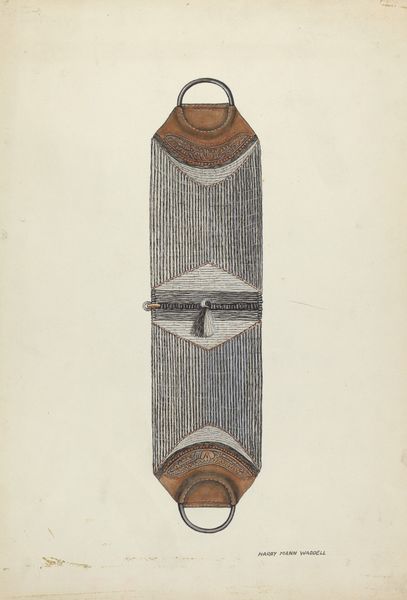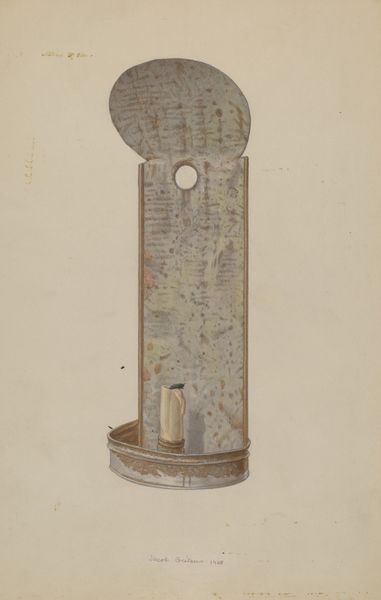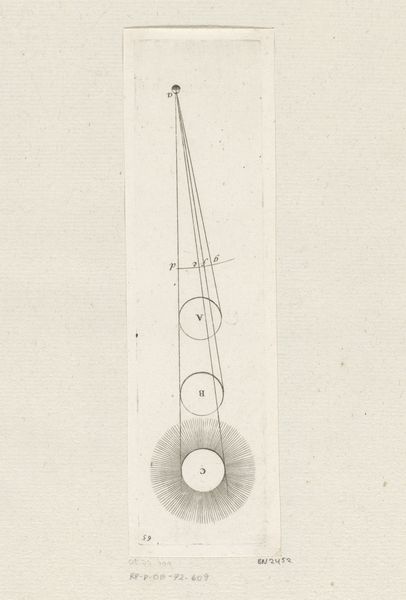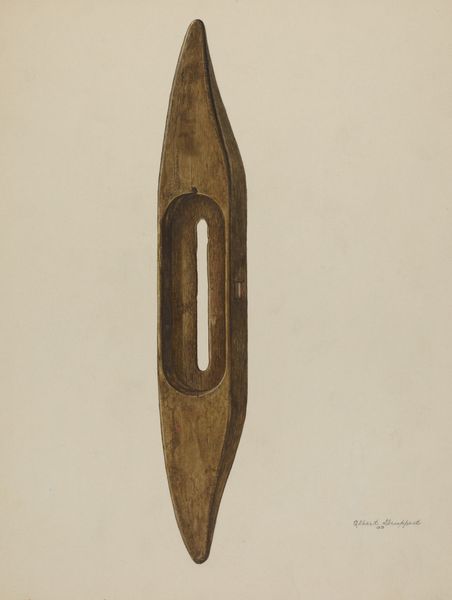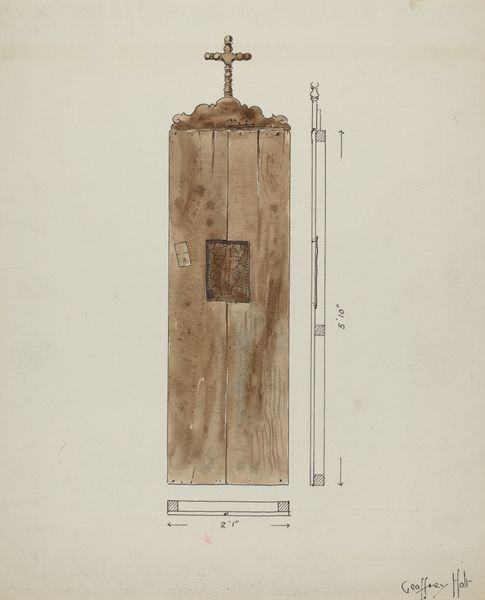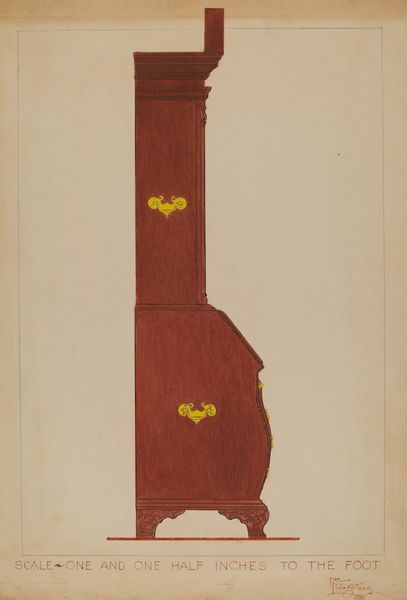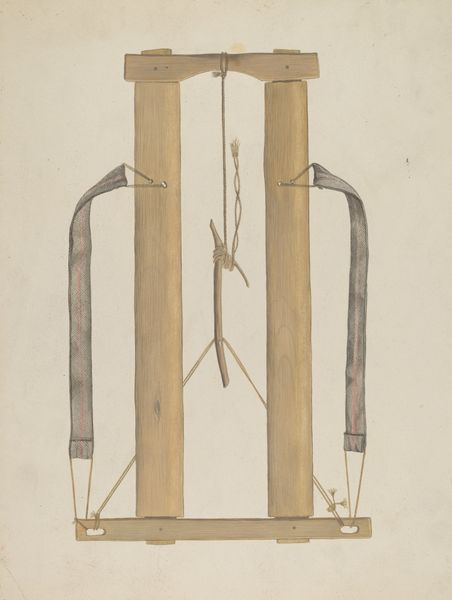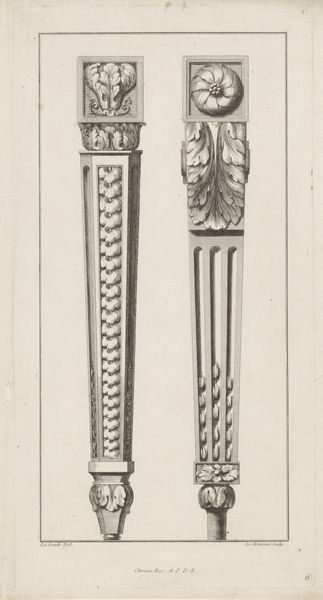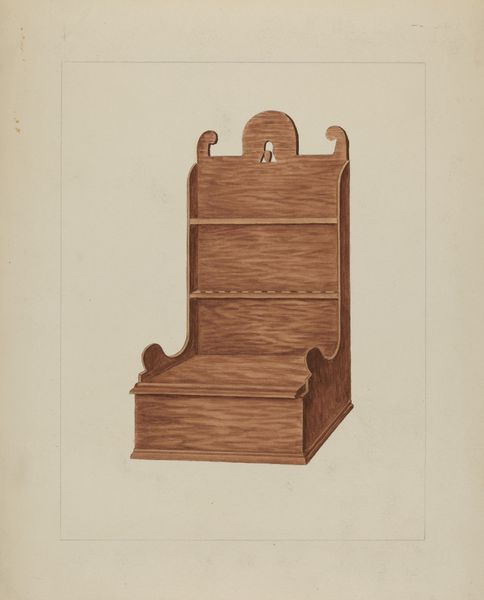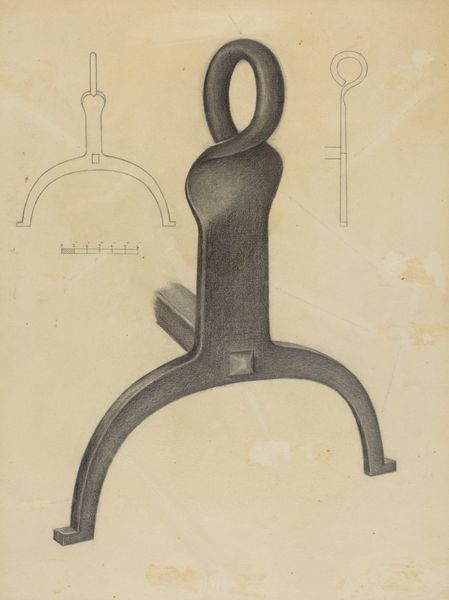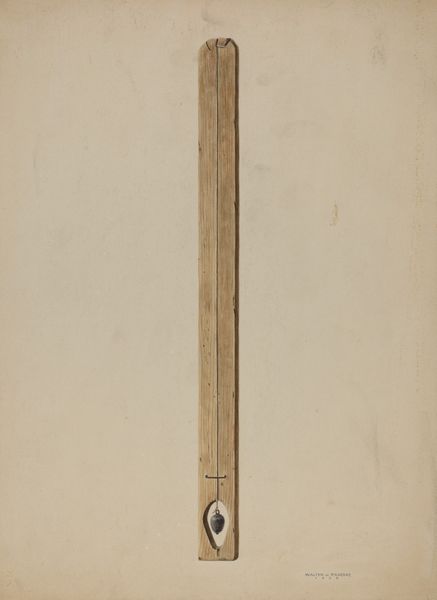
drawing, paper, pencil
#
drawing
#
paper
#
pencil drawing
#
pencil
#
line
Dimensions: overall: 35.8 x 24.5 cm (14 1/8 x 9 5/8 in.) Original IAD Object: 33 1/2" long; 10" wide
Copyright: National Gallery of Art: CC0 1.0
Curator: Looking at this drawing, I immediately think of quiet evenings, meticulous craft, and tradition, almost a reverence for the skill of the saddle maker. Editor: Indeed, it possesses a very peaceful quality. The work we're observing is titled "Cinch for Saddle," crafted around 1936 by Cornelius Christoffels. It's a pencil drawing on paper, giving it that wonderfully tactile feel despite being two-dimensional. Curator: The saddle cinch as a symbol carries a rich history. The tool itself suggests horsemanship and by extension the rancher culture that has shaped the landscape of the American West. Think of the visual associations: independence, grit, and the ever-present dialogue between humans and the natural environment. Editor: I find myself drawn to the detailed patterns; the contrast of those striped woven sections against the smooth leather. Note too, the almost ceremonial tassel at its center—it suggests a pride taken in crafting not just a functional item, but a beautiful object as well. What strikes me most is how the artist elevated what is usually quite mundane into something so appealing. Curator: Exactly! This reflects an era where craft held a very different cultural weight, where skill was acknowledged and prized. What makes the saddle a vital and visible part of everyday labor becomes its artistic appeal. This speaks to the evolving understanding of art in everyday objects during that period. Art was present in function and practicality. Editor: So, beyond its straightforward representation of a saddle component, we see in "Cinch for Saddle," a symbolic portrayal of not only rural life, but also how we find purpose and value in traditional skillsets. Curator: A perfect note to end on. This piece reminds us that visual appeal can arise from the celebration of function, of utility, of how everyday things weave into larger patterns of societal identity.
Comments
No comments
Be the first to comment and join the conversation on the ultimate creative platform.
